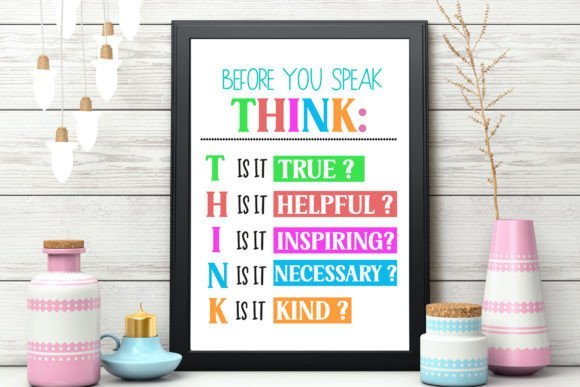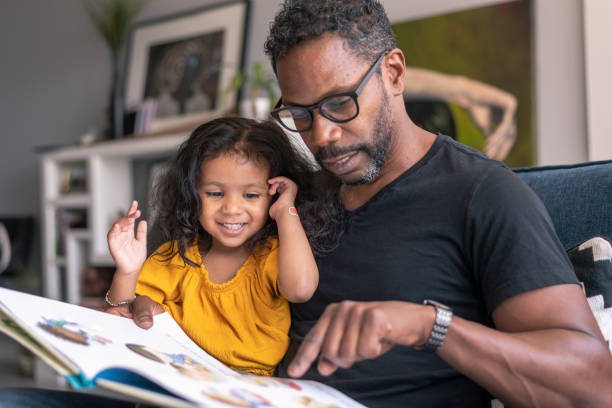Anger is a type of emotion. A typical reaction. Just like joy, sadness, and terror. There are numerous reasons that can cause children to become enraged. Anger, if unrestrained, can lead to aggressiveness. As a result, biting, name calling and fighting are on the horizon.As a result, it is critical that you teach children to recognize and regulate their anger. It’s never too early to educate your child how to “control anger ” with Anger Management Worksheets for Kids.
Anger Management Worksheets for Kids From A to Z
A is for Anger

ABC Book of Anger Management for Kids A is for Anger
What is anger?
Anger is a feeling inside you when you get tense and want to take it out on somebody. Something inside you feels jumpy. You want to break things around you. You want to get away from everyone.
You might even get so mad that it feels like your head is going to explode!
Don’t you worry, kiddo! This feeling of anger is completely natural. And believe it of not, it happens to everyone.
How do your body and mind feel when you are angry?
- Your heart starts to pound
- You start to behave recklessly
- You have violent and awful thoughts in your mind
- You have an urge to scream and shout at people
- You go in attack-mode. You clench your fists and grit your teeth.
- You cannot express your feelings in a polite way
It is OKAY to be angry. But it is NOT OKAY to behave like nuts!
This image shows a young child looking angry. Their fists are clenched and their expression is twisted in anger. The image also includes the text “A is for Anger” and “It is OKAY to be angry. But it is NOT OKAY to behave like nuts!”
This image is a good reminder that it is okay to feel angry, but it is important to express our anger in a healthy way. We should not lash out at others or behave in a destructive way.
Here are some tips for expressing anger in a healthy way:
- Take some deep breaths.
- Talk to a trusted adult about how you are feeling.
- Go for a walk or do some other form of exercise.
- Express your anger in a creative way, such as writing, painting, or playing music.
- Find a healthy coping mechanism that works for you, such as yoga, meditation, or spending time in nature.
Why do you get angry?
- You are not getting what you want.
- You are not getting enough sleep.
- You feel fatigued and cranky.
- You feel physically uncomfortable. You feel itchy in your eyes or ears and so on.
- Sudden loud noises, bright lights or unpleasant smells.
- You are hungry and stressed. You feel unheard, misunderstood and disconnected.
- You have heard a bad news. You have remembered some painful memories.
- You are displacing your anger. For example: You had a bad day at school. You come home and let out an outburst of anger.
- You feel that you have been left out of a social event.
- You feel hurt and anxious.
- Your boundaries have been crossed.
B is for Breathing Techniques

ABC Book of Anger Management for Kids B is for Breathing Techniques
Activity:Lion’s Breath
You are brave, you are strong and you can give off an almighty roar like a lion. Try it yourself like this:
- Kneel down on the floor and sit on your heels.
- Rest your hands on your knees or on the floor.
- Spread your fingers wide.
- Take a deep breath in through your nose and hold your breath.
- Tilt your body forward slightly, 6) Open your mouth wide, stick out your tongue, and let out your breath through your mouth with a big, loud ROARRR! Repeat this 4/5 times. You’re the lion, right? Let the anger out of you in a positive manner.
C is for Communication

ABC Book of Anger Management for Kids
This is a great reminder that communication is key to managing anger in a healthy way. When we are angry, it is important to be able to communicate our feelings and needs to others in a clear and respectful way. This can help us to avoid misunderstandings and conflict.
Here are some tips for communicating effectively when you are angry:
- Take a break. If you feel yourself getting too angry, take a few minutes to calm down before you say anything. This will help you to communicate more clearly and respectfully.
- Use “I” statements. This means talking about your own feelings and needs, rather than blaming or criticizing the other person. For example, instead of saying “You’re always late,” you could say “I feel frustrated when you’re late because it makes me feel like you don’t respect my time.”
- Be specific. Don’t just say “You’re making me angry.” Instead, explain what the other person is doing that is making you angry. For example, you could say “I’m angry when you raise your voice at me.”
- Be open to listening. It’s important to remember that the other person may have their own perspective on the situation. Be willing to listen to their side of the story and try to understand where they’re coming from.
- Be willing to compromise. Once you have both had a chance to communicate your feelings and needs, be willing to compromise in order to find a solution that works for both of you.
Communicating effectively when you are angry can be challenging, but it is important to remember that it is the key to managing your anger in a healthy way.
D is for Distraction Techniques
Hey kid! Wouldn’t that be great if you could play some games and calm your anger?
Activity: Play Anger Games
Anger Defuser: This anger game is wrapped in mystery. It has two different docks for kids and teens. While playing this solve-the- mystery game, you can tame your anger.
Royal Rage: This game is suitable for kids ages 8-12. In this card game, you have to play the role of different castle characters. These fun characters represent different faces of anger- different levels of anger- from low to high, and various angry attitudes. It also signifies how you can cope with other peoples anger. Royal Rage has 90 questions. 2-6 players can play the game.
Thoughts and Feelings Card Game: Suitable for kids aged 5-12, Thoughts and Feelings is a therapeutic card game. The deck has 35 cards. Each card has drawings and writing prompts that help you identify and process a variety of anger-provoking issues. The sentence completion cards are great conversation starters.
Temper Tamers in a Jar: This game is suitable for kids ages 8-11. This card game has four types of cards- Share, Act, Tips and Do’s. In Share part, you share a real-life experience. In Act part, you get to play a role to manage a tricky situation. The Tips part gives you some anger management tips. The Do part asks you what you would do in an actual scenario. There are 101 cards contained in a jar.

ABC Book of Anger Management for Kids D is for Distraction Techniques
E is for Expressing Anger in a Healthy Way
Here are some healthy ways to express anger:
- Talk to someone you trust. This could be a parent, teacher, friend, or counselor. Talking about how you’re feeling can help you to process your anger and develop healthy coping mechanisms.
- Write in a journal. Writing about your anger can help you to understand and express your emotions in a safe and healthy way.
- Exercise. Exercise is a great way to release stress and anger. Go for a run, play a sport, or do some other type of physical activity.
- Take a break. If you’re feeling angry, it’s important to take a break from the situation. Go for a walk, listen to music, or do something else that you enjoy.
It is important to find healthy ways to express your anger so that it does not control you. If you find that you are struggling to manage your anger on your own, it may be helpful to seek professional help from a therapist or counselor.

ABC Book of Anger Management for Kids E is for Expressing Your Feelings Your Feelings
F is for Fun Activities
Activity: Fun Activities
Drawing your angry face, your face shows your anger
Read your favorite books
Watch a favorite TV program
Sing a song
Walk on tiptoes
Run around the house. 3 times
Tear up some papers
Walk in the room like a cat
Report your emotions like a weatherman. For example, “I am getting dark with a possibility of some tear drops coming out”
Ask your mom/dad to tell a story from their childhood
Look at the clouds and compare their shapes with known objects
Jump 15 times
Hug a big teddy
Wash your hands
Trace your fingers with opposite hands
Rock in a rocking chair

ABC Book of Anger Management for Kids F is for Fun Activities
G is for Grounding Techniques
Hey kid! Do you know what grounding techniques are? These are activities that help you connect with your surroundings. These make you focus on yourself and your surroundings. Here are some fun grounding activities for you:
Activity: 5-4-3-2-1 Grounding with Senses
You need to use your senses for this exercise. Do this:
- Sit comfortably in the room and close your eyes.
- Take a deep breath in through your nose, hold and count to 3. Then breathe out through mouth to the count of 3.
- Open your eyes, look around and name-
- 5-things you can see in the room and outside (through window).
- 4- things you can hear around you (birds chirping, cars, planes, motorcycles, pressure cookers etc.)
- 3- things you can touch (the carpet or tiles or wood on floor, your face, your hair, your leg, your clothes, the tables, the news paper)
- 2-thing you can smell (flower in the room, your clothes, your hand, food being cooked)
- 1- thing you can taste (chocolate, waffles, pie, pudding, cupcake- whatever is handy)
- Then take a deep breath in through your nose and breathe out through mouth to end.

ABC Book of Anger Management for Kids G is for Grounding Techniques
……
Z is for Zen Garden
Activity: Make a Zen Garden
What you will need:
- Sand
- A tray or box (to keep the sand)
- Fork or tooth pick (to draw lines)
- Rocks, sea shells or gems
- Small pieces of tree bark (collect from ground, do not remove from a tree)
Do this:
- Pour sand into the tray or box. Make it half-full.
- Run your hands slowly through the sand. Sift the grains with your fingers.
- Take a deep breath. Take one small rock and place it on the sand.
- Take three rocks and stack them on the sand like a mountain.
- Take 2-3 sea shells or gems and place them on sand at different places.
- Plant the tree barks in the sand.
- Use the fork or tooth pick to rake straight lines on sand from one side to the other.
- If you get an obstacle (rock or sea shell or plant bark) along the way, curve around it. Draw flow lines around the object.
- Imagine that the lines you draw on the sand represent your anger. Shake the sand tray until the lines disappear. Imagine your anger disappearing as well.
- Start raking lines again. Then make them disappear. Feel the calmness in your mind while you play with your zen garden.
Zen gardens are a great way to relax and calm down. The act of raking the sand and creating patterns can help to clear your mind and focus on the present moment. If you find yourself feeling angry, try making a zen garden to help you calm down and relax.

ABC Book of Anger Management for Kids Z is for Zen Garden
Help your child learn to manage their anger in a healthy and positive way!
Anger management for kids
Anger is a normal human emotion, but it’s important for children to learn how to manage it in a healthy way. Uncontrolled anger can lead to aggression, which can have negative consequences for both the child and their surroundings.
Why is anger management important for kids?
- Anger management can help kids develop emotional intelligence and learn how to regulate their emotions.
- It can help them build positive relationships with others and avoid conflict.
- It can help them succeed in school and other activities.
- It can help them develop healthy coping mechanisms for dealing with stress and frustration.
How to help kids manage their anger
- Identify their anger triggers. What are the things that typically make your child angry? Once you know what their triggers are, you can help them develop strategies for dealing with them in a constructive way.
- Teach them how to identify their physical signs of anger. Does their heart race? Do their fists clench? Do they feel hot in the face? Once they know what their physical signs of anger are, they can start to recognize them early and take steps to calm down.
- Model healthy anger management behaviors. Children learn by watching the adults in their lives. Show them how to express their anger in a healthy way by staying calm, using words instead of actions, and taking breaks when needed.
- Provide them with healthy coping mechanisms. When kids are feeling angry, they need to have healthy ways to cope with their emotions. Some helpful coping mechanisms include deep breathing, exercise, relaxation techniques, and talking to a trusted adult.
- Be patient and supportive. It takes time and practice to learn new skills. By providing them with the tools and support they need, you can help kids develop anger management skills that will last a lifetime.
Professional tips for anger management
- Cognitive-behavioral therapy (CBT) is a type of therapy that can help kids identify and change their negative thoughts and behaviors. CBT can be very effective for helping kids manage their anger.
- Social-emotional learning (SEL) is a process of learning how to manage emotions, build relationships, and make responsible decisions. SEL programs can be very helpful for teaching kids anger management skills.
- Anger management groups can provide kids with support and guidance from other kids who are also learning to manage their anger.
If you are concerned about your child’s anger management skills, talk to their pediatrician or a mental health professional. They can assess your child’s needs and provide recommendations for support and treatment.
Are kids with ADHD angry?
Children with ADHD are at an increased risk for developing anger management problems. This is due to a number of factors, including:
- Impulsivity: Children with ADHD often have difficulty controlling their impulses, which can lead to them saying or doing things without thinking. This can be especially problematic when they are feeling angry.
- Difficulty regulating emotions: Children with ADHD may also have difficulty regulating their emotions, which can make it difficult for them to manage their anger in a healthy way.
- Frustration: Children with ADHD may experience frustration more often than other children due to their difficulty paying attention, following directions, and completing tasks. This frustration can lead to anger outbursts.
It is important to note that children with ADHD are not inherently angry. They simply need to learn how to manage their emotions in a healthy way.
There are a number of things that parents and caregivers can do to help children with ADHD manage their anger:
- Teach them about their emotions. Help them to identify their triggers and to understand how their body feels when they are angry.
- Give them healthy coping mechanisms. Teach them how to calm down and relax when they are feeling angry. This could include deep breathing, exercise, or talking to a trusted adult.
- Set clear expectations and boundaries. Let them know what behavior is acceptable and unacceptable.
- Be consistent with discipline. When they break the rules, enforce the consequences that you have set.
- Be patient and supportive. It takes time and practice to learn new skills. Be patient with your child and offer them your support as they learn to manage their anger.
Professional Perspective
From a professional perspective, it is important to understand the underlying causes of anger problems in children with ADHD. This will help to inform treatment and intervention strategies.
For example, if a child’s anger is primarily due to impulsivity, then the focus of treatment may be on developing impulse control skills. If a child’s anger is due to difficulty regulating emotions, then the focus of treatment may be on teaching emotion regulation skills.
It is also important to involve parents and caregivers in the treatment process. Parents and caregivers can play a vital role in helping their child to learn anger management skills.
Anger management is a complex process, and there is no one-size-fits-all approach. However, with the right treatment and support, children with ADHD can learn to manage their anger in a healthy way.
If you are struggling to help your child with ADHD manage their anger, please reach out to a mental health professional for support. A therapist can assess your child’s individual needs and develop a treatment plan that is tailored to their specific situation.
Resource












